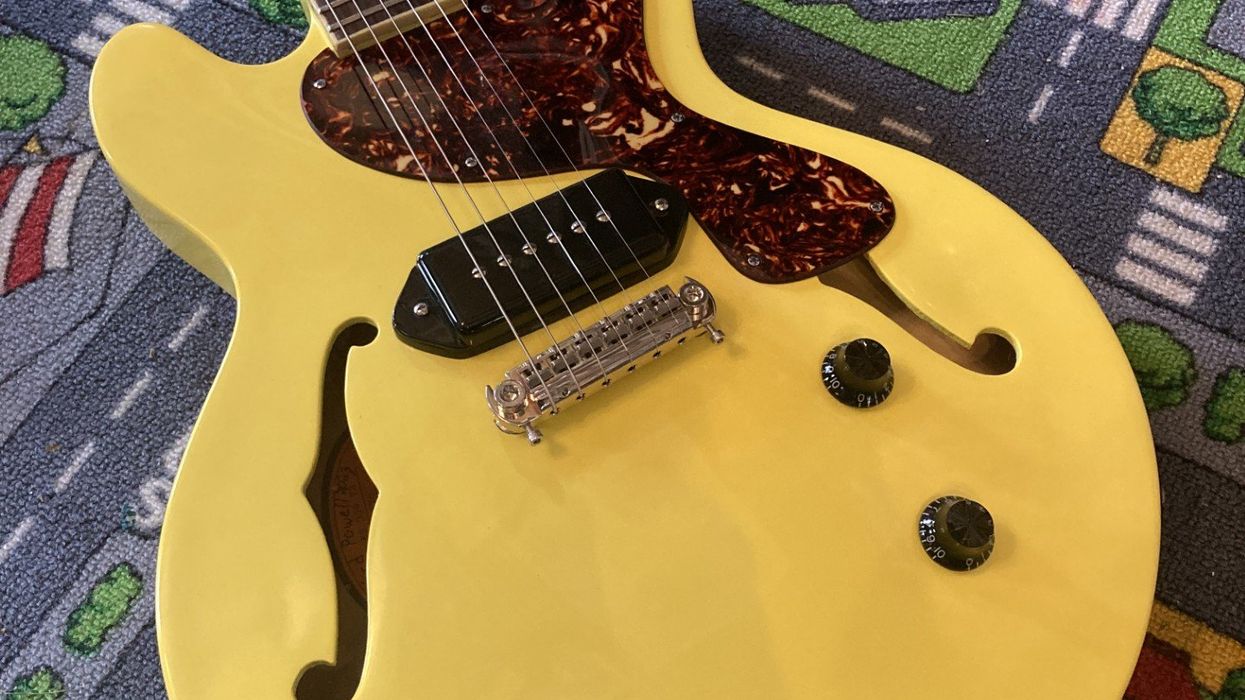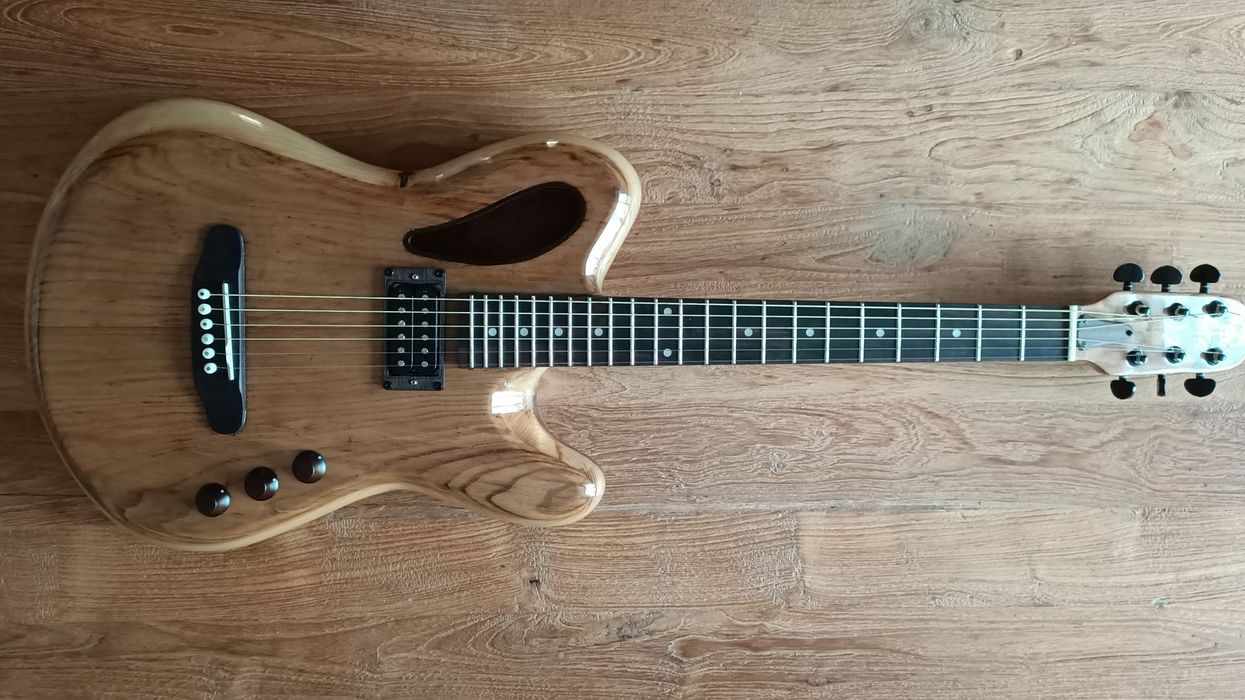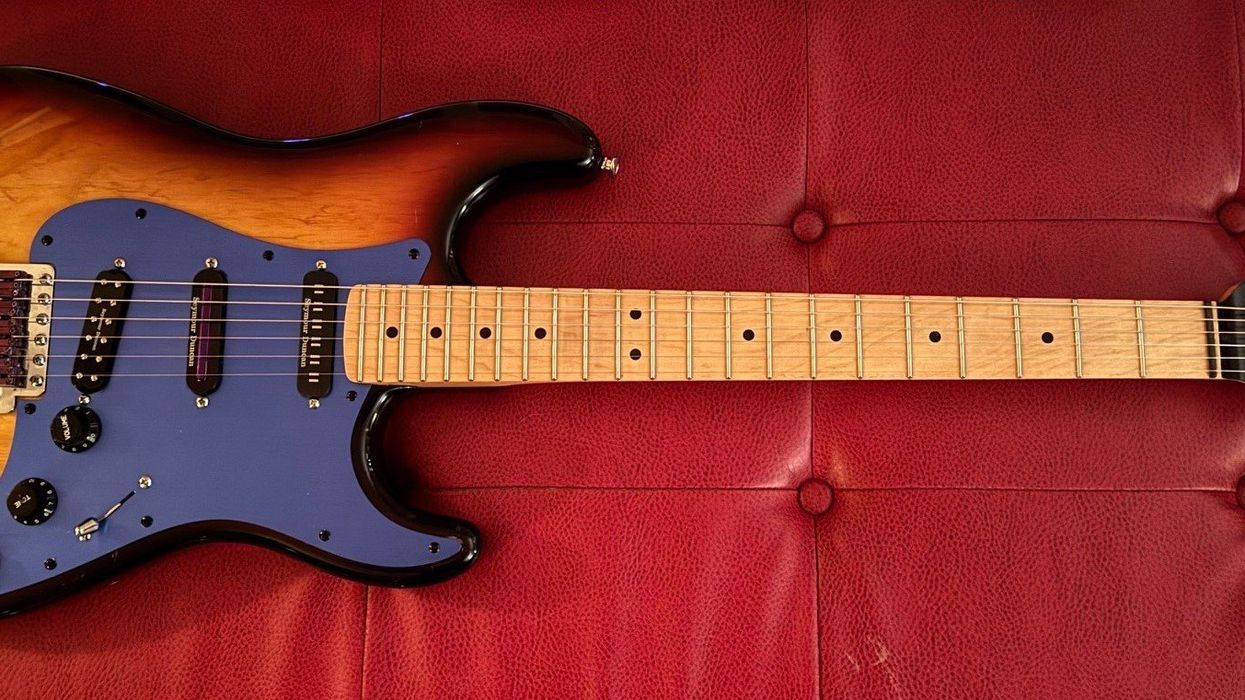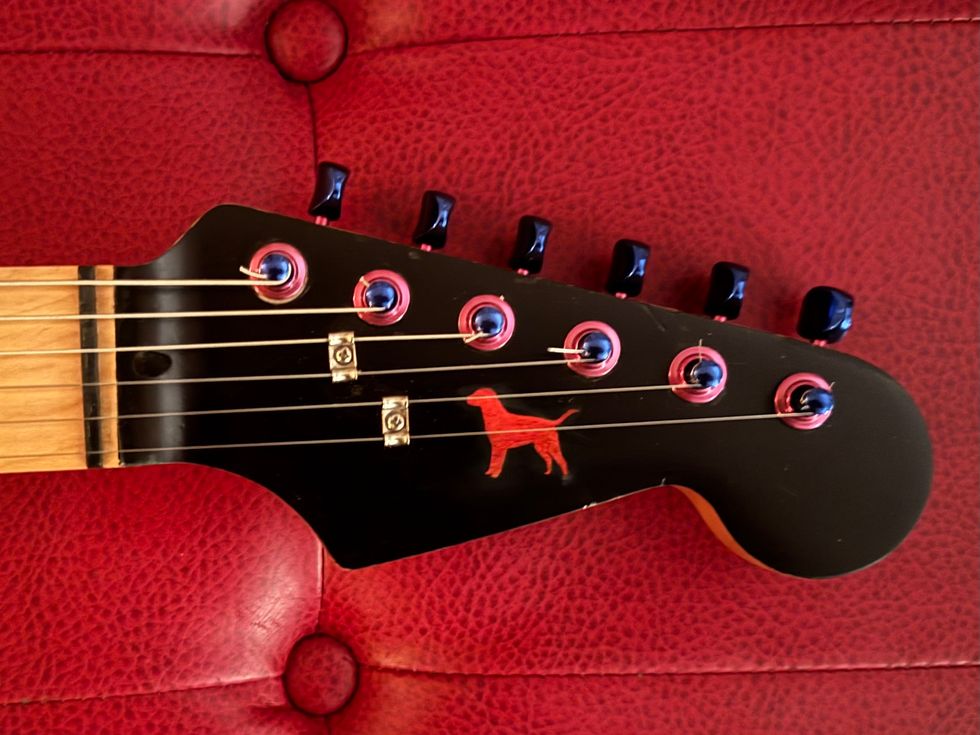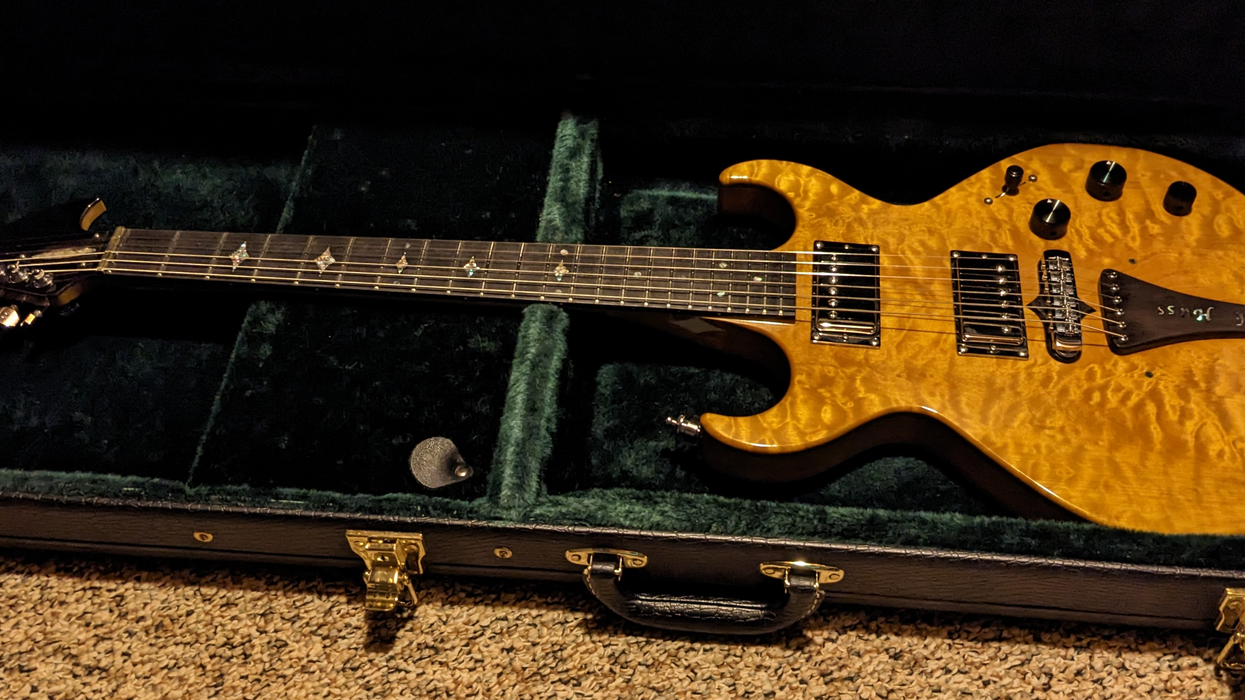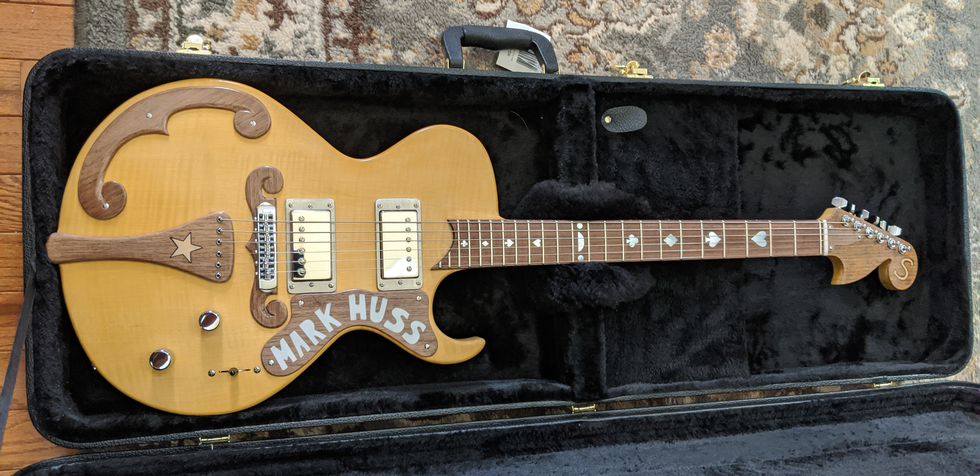Name: Kito Young
Location: Ankeny, Iowa
Guitar: 1989 Epiphone S-310
This guitar started out as a red Epiphone S-310. It was my second guitar ever, purchased new in 1989. After playing it a few years, I upgraded to better guitars, and I decided instead of selling it I would use it for experiments. At first, I stripped off the finish and refinished it in clear polyurethane. That's when I discovered the body was made of plywood! It stayed that way for many years, but about a decade ago, I decided to paint a portrait of unusual characters on the front and back.

I sprayed the body and headstock with primer and black paint, and then I painted the characters myself. I used acrylic paints for the figures, painting the figures in black and white (like the pickguard) and then glazing colors on top. I left the pickguard black and white because I liked the contrast and didn't want the 'guard to disappear visually. Everything from vampires to trolls to wrestlers now grace this guitar. My favorite character might be my dog, Nona, who can be seen in the lower part of the back portrait, holding her favorite toy sheep.
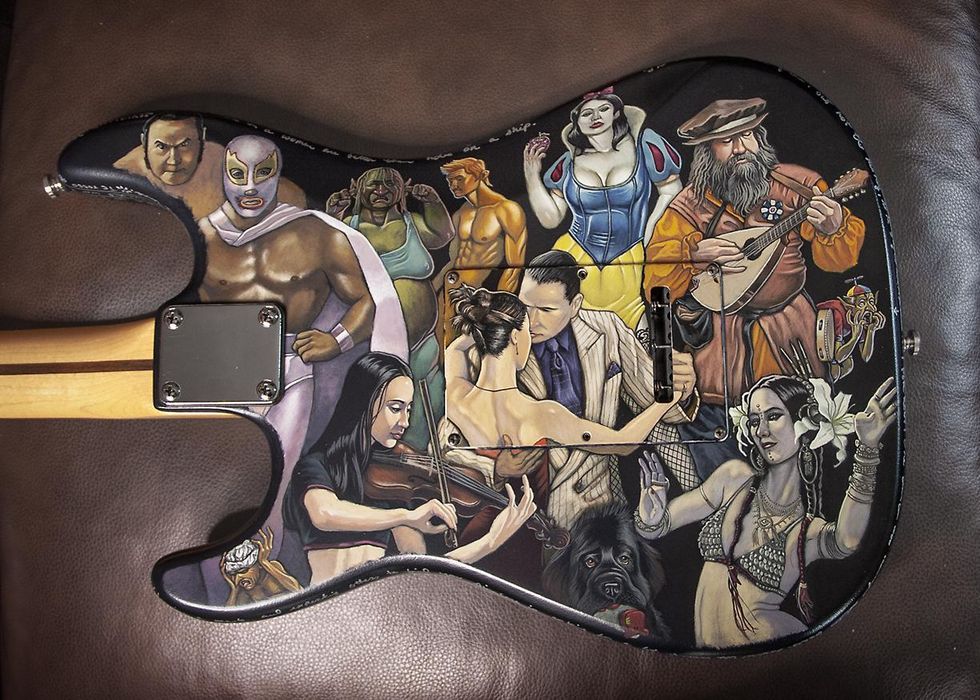
Having made cosmetic changes, I felt I might as well try to make the guitar more playable. The original neck had a broken truss rod, and the neck profile wasn't very comfortable, so I swapped it for a Kramer Striker 300ST neck (I had to repaint the headstock to match). I replaced the original pickups with a Seymour Duncan SSL1 neck pickup and two Duncan-designed single-coils (also taken from the Kramer), and I rewired the guitar with cloth pushback wire. Cloth wire is a joy to work with, and I feel it makes soldering much easier. I installed CTS pots and an Orange Drop capacitor. Finally, I replaced the stock trem with a new bridge with a larger sustain block. The replacement required drilling new holes for the mounting screws and enlarging the tremolo cavity with a router to allow the new trem' to fit. Thankfully I have woodworking experience, and the routing went off without a hitch.
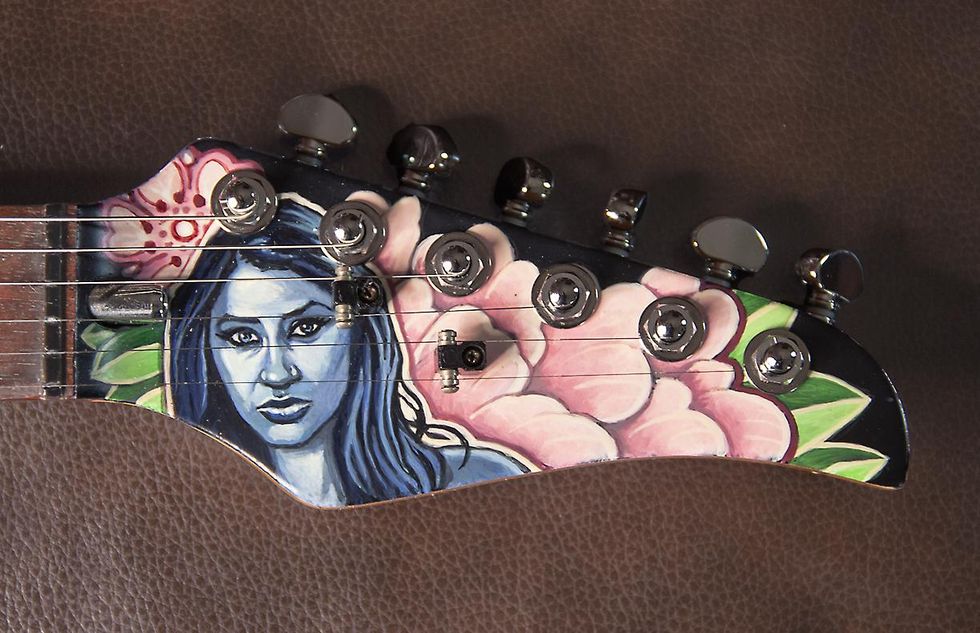
My two artistic passions are visual arts and music. My work as an illustrator indulges my love of painting people, and home-recording original songs satisfies my musical itch. Usually the two disciplines don't intersect, so it was extra fun combining my two interests in this project. The guitar has remained in its current state for almost a year now, but I'm wondering if I should swap the pickups and maybe the neck again. The experiments never end!!!
Send your guitar story to submissions@premierguitar.com.
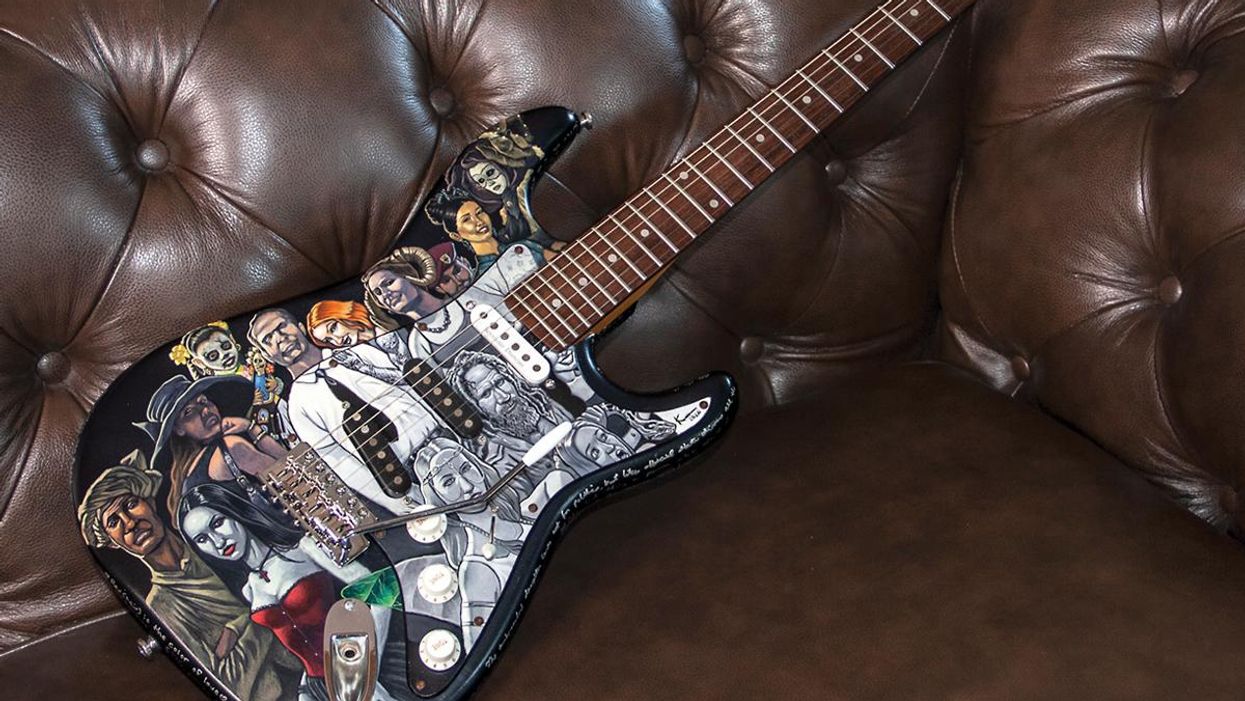


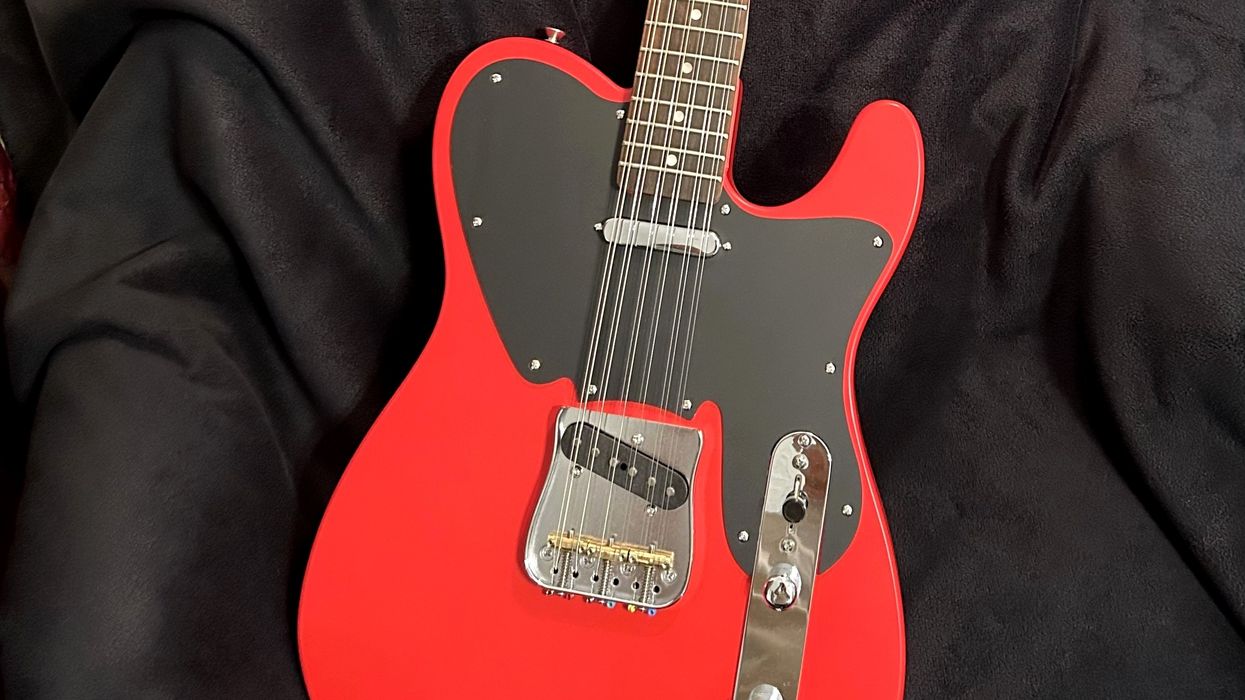

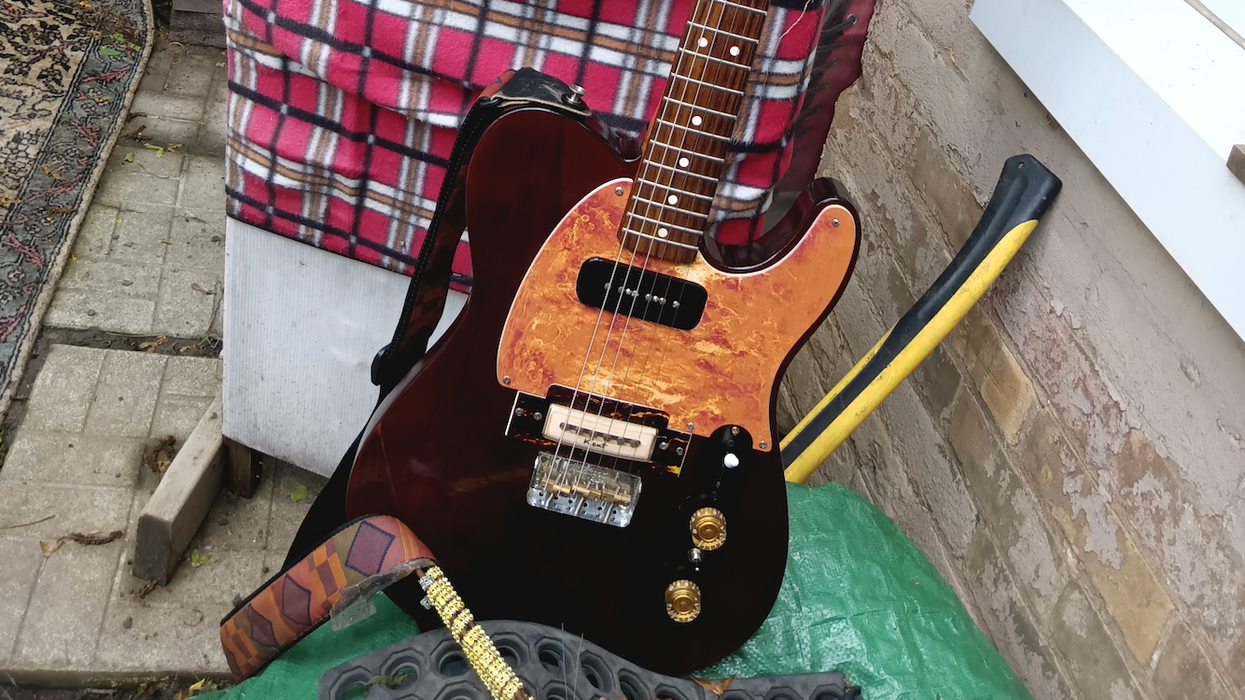




![Devon Eisenbarger [Katy Perry] Rig Rundown](https://www.premierguitar.com/media-library/youtube.jpg?id=61774583&width=1245&height=700&quality=70&coordinates=0%2C0%2C0%2C0)

